Best Practices Articles

7 Ways to Drive Channel Marketing via Distribution
Most large organizations selling through a channel rely either on a distributor or a wholesaler, but rarely take a structured approach to driving partner marketing. This is truly a missed opportunity in channel marketing. While most distributors or wholesalers do not have in-house captive marketing capabilities and tend to outsource those functions to providers like ZINFI, there are other core capabilities, aside from marketing, that a distributor or a wholesaler can provide that are critical for channel sales.
In this article, we will explore in detail the core channel marketing programs that a distribution partner can help implement for a vendor seeking to reach more channel partners more effectively. When I refer to “distributors” here, I am thinking of the entire range of wholesalers, master agents and other channel aggregators who tend to provide more than a bank and warehouse capabilities for downstream resellers, agents and other partners.
Before we take a deep dive into various channel marketing programs, let’s set the stage for understanding where distribution partners can truly help. There are basically two broad categories of programs in which a distribution partner can help: “market to” programs and “market through” programs. The term “market to” refers to marketing activities aimed at partners designed to make them aware of and engaged in certain channel marketing programs. “Market through” refers to activities designed to drive demand generation through and within the channel partner base.
The purpose of “Market to” channel marketing programs is essentially to encourage the partner base to engage in strategic initiatives by, for example, joining a new or an existing channel program, getting trained and certified on certain products and services, or signing up for performance incentives. “Market through” channel marketing programs, on the other hand, refer to programs designed to engage partners in various end-user-oriented activities related to solution campaigns, alliance campaigns, new product launches and the like.
The primary value of a distribution partner is to bring in warehousing and financing capabilities to fulfill reseller partner needs. “Reseller” in this context refers to a whole category of channel partners, such as agents, resellers, valued added resellers, system integrators, franchises and retailers. While the primary purpose of distribution is to aggregate demand and work with vendors as a fulfillment arm of their channel partners, most distributors today have taken on value-added channel marketing programs as well. As discussed earlier, these channel marketing programs are essential for a vendor to recruit, engage, enable and manage their partner base, and distribution partners can play a critical role in their successful execution.
With this as a background, let’s take a deep dive into these “market to” and “market through” channel marketing programs and explore where, why and how a distribution partner can help. As we go through this discussion, I will also point out the geographic differences from one region to another. Some of these channel marketing capabilities will not only vary by region or country, but can be a critical way to scale certain channel marketing programs.
“Market to” programs – The primary purpose of “market to” programs is to recruit, onboard and enable partners with various training and tactics, but also drive performance by integrating certain incentives into each activities. Alignment of incentives with various channel marketing programs and tactics is critical to make sure the path to profitability for partners (i.e., the return on their investment in time and money) is crystal clear.
Let’s explore in a bit more detail how the three core “market to” programs can be driven by a distribution partner.
- Partner recruitment – The primary purpose of a distribution partner is to aggregate demand. As they pursue this objective, they will end up compiling a decent-size list of channel partners who have purchased products and solutions from them over a period of time. If a vendor is planning to make partner recruitment a focus of their channel marketing initiative, this list is a great place to start.In addition to a target list of contacts, a distribution partner should also have intelligence about the buying profile of these partners. If they have invested in partner profiling activities with a provider like ZINFI or have gathered information internally, they may actually have complete profiles of these resellers. These profiles may capture the nature of business each reseller is active in, which products and services they can sell, and specific solution categories the vendor may be interested in. The profiling database may also capture what level of technical certifications a specific reseller has earned across multiple product and services categories.By coupling a contact list with reseller profiles, a distribution partner can play a crucial role in helping a vendor put together a partner recruitment program. While a distributor may not have in-house marketing capabilities that include channel marketing automation and concierge services, when they partner up with providers like ZINFI, they can easily provide comprehensive recruitment capabilities.
- Partner training – Keeping partners trained with latest marketing, sales and technical aspects of a channel marketing program is critical for success. This, again, is an area where a distribution partner can help significantly. As I noted earlier, distribution partners tend to have a large reseller contact databases, and therefore can segment resellers by functions, such as marketing, sales and technical users, and invite them into appropriate types of training programs depending on their functional profile.While most channel marketing vendors today provide some level of online and face-to-face training, driving partner engagement in those programs is critical. This is where distributors tend to partner up with channel marketing agencies like ZINFI to help execute training programs once they have identified key areas of focus.Now, we all know training for training’s sake doesn’t drive results. Therefore, when a vendor is pulling together a channel marketing program, it is essential to align the ultimate sales objectives to a specific set of partner training programs. This alignment could be tied to new product launches or penetration into a new market segment where the vendor doesn’t currently have reach, or it could be focused simply on expanding a field-based support initiative by increasing the number of certified partners. Distributors tend to do well and deliver on well-defined partner training programs with specific goals and objectives.
- Partner incentives programs – One of the most important aspects of channel marketing is to drive certain channel behavior by incentivizing the reseller base. Most vendors have incentives programs that utilize market development funds, co-op funds, sales rewards, sales rebates, referral commissions and other incentives. The key for any channel marketing program to work, however, is not so much the incentives themselves. Rather, the path that partners must follow to make money via incentives needs to be absolutely clear.By working with a distribution partner, a vendor can roll out specific incentives programs to drive sales in specific product categories, to build technical competencies or increase add-on, upsell and other channel marketing initiatives. In much the same way that they can play an important role in partner recruitment and training programs, distribution partners can provide vendors with a focused list of resellers who are eligible for certain incentive programs, and those resellers can be targeted in a tightly focused way to drive engagement, adoption and results.As I discussed earlier, if a distribution partner doesn’t have an in-house marketing team, then an experienced channel marketing organization like ZINFI needs to be brought on board. Once this marketing capability has been added to the mix, channel marketing outreach can begin with various tactics, such as social marketing, search marketing, email marketing and event marketing to engage partners, inform them about the channel incentive programs that are available, and explain how partner organizations can benefit from the incentives and what they will have to do to earn them.
- New product launches – We are at an amazing time as a society, and almost every aspect of our lives—home, school, work and even government—is being impacted by digitization. Whether we are selling technology or not, we are all users of technology. There is not a single industry vertical that is not driven by this fundamental transformation in which product creation, service creation and delivery are all being digitized.Because of the rapid pace of change that digitization enables in both the consumer and business segments, numerous new products and services are launched every quarter. This, again, is an area where distribution partners can help to put together channel marketing programs focused on new product launches. They can put together a list of resellers that can sell a new product, and thereby extend reach. They can also put together a list of resellers that have sold a similar product from the vendor, but have recently disengaged for one reason or another. Investigating why qualified resellers have disengaged can help vendors better understand what they need to do to be successful with a new product launch.Again, to drive demand for a new product, a channel marketing vendor will have to provide a set of channel marketing and sales assets, preferably via integrated campaigns. (For more on this, please refer to our side bar on “Leveraging Channel Marketing Automation”). This is where a global marketing concierge vendor like ZINFI can help. A distribution partner and a vendor can work together with a concierge agency and roll out new product launches and execute them in multiple markets in a consistent and coordinated fashion.
- Solutions campaigns – If an end user is procuring a solution rather than a discrete product or a service, it becomes essential from both the marketing and sales perspectives that a vendor engage with another vendor and put together a complete solution. In cases where such relationships between multiple vendors don’t exist, a distribution partner can play a critical role. Typically, a distribution partner will reach out to two or more of their vendors to put together solution bundles. Distributors may also manage end-user awareness campaigns to drive the sale of such bundles.If a channel marketing vendor is selling through a multi-product distributor or a wholesaler, it is essential to understand how such promotions can be run. This reduces the overall costs of execution, since these campaigns are shared by multiple vendors via distribution, but also increases the relevance of the campaigns to the end customers, since they can evaluate the entire solution set with all necessary components in a single offering. As consumers, we can all relate to the convenience of a travel reservation site that sells hotel rooms, airline tickets and car rentals all in a single, reduced-price package. The same model exists in both B2C and B2B segments.When it comes to the execution of such channel marketing programs, a distributor can play the role of an aggregator and bring in several vendors to the table. Once a business plan has been developed by collaborating with multiple vendors, a marketing concierge organization like ZINFI can execute a complete set of integrated campaigns to drive results.
- Alliance campaigns – When a channel marketing vendor sells a product or solution that naturally complements another vendor’s product and solution, then in many cases these vendors can team up as go-to-market or technology-alliance partners. This is quite common in the technology field, but it is also common in the B2C segment. The nature of the alliance will determine the exact nature of the campaign and composition of the offers, tactics and overall execution plan. However, once an alliance campaign has been figured out, it easily can scale globally and become quite cost-effective.On that note, it’s important to remember that most business alliances are global. Repeatedly we have observed that vendors who partner up strategically can create new markets – especially in markets that are in the early stages of development. If a vendor is launching a new product category, it can be very difficult to raise awareness, which often translates into significant channel marketing and sales costs. However, joining an existing ecosystem and reaching out to a pre-selected, installed base of buyers is a classic way of reaching out to customers who may be willing to consider a new product category that augments an existing business.Distribution partners can play a critical role in figuring out the alliance bundles. The can also, in many cases, play the important role of match-maker between large vendors and small. Most large, successful vendors are constantly approached by smaller and emerging vendors for partnerships, but evaluating the potential of those partnerships is time-consuming, expensive and at times risky. Distributors can play a strategic sourcing role by running “soft” solutions campaigns for vendors to test the market before a formal alliance is put together between two or more vendors. Again, once a solution concept been tested and alliances have been put together, the go-to-market expansion can happen rapidly on a global scale through proper channel marketing programs via distribution partners.
- Prospecting blitz – Last but not least, one of the most popular multi-partner demand generation programs is a tactic referred to as “floor days,” where several vendors’ sales representatives work with distribution business development teams and channel partners to call prospective buyers. This happens in all sectors and is a very popular channel marketing program. It might involve a high-end shampoo manufacturer working with cosmetic distributors to call up thousands of salons to promote certain products, or perhaps a high-tech product manufacturer calling up system integrators. Whatever the industry, the method is essentially the same, and the primary goal of calling is to build awareness.Now, in today’s age of digital channel marketing and selling, one may be skeptical about this old-school smile-and-dial approach. It’s true that cold-calling often fails to deliver these days, and “floor days” are not immune to such failure. However, when combined with targeted digital prospecting, phone-based marketing and selling can work, and phone calls can quickly generate valuable buyer feedback for both distribution and vendor organizations. When done right, a prospecting blitz in which sellers reach out to a target audience via integrated digital tactics like email, search and social—and then enhance those efforts with old-school dialing—can be surprisingly successful as a channel marketing program in driving transactional sales.A prospecting blitz also builds sales muscles. We’ve seen it work repeatedly. Vendors that put together multi-quarter integrated digital prospecting blitz programs by working with distributors can reap big rewards. This, again, is an area where a global concierge agency like ZINFI can significantly enhance the ability of a distributor—not only to develop carefully planned blitz programs, but also to execute them locally, regionally and globally to drive real demand for specific products and solutions.
The purpose of this article has been to lay out in a very tangible way how vendors can turn to a distribution partner for specific kinds of assistance, complement those activities with marketing concierge capabilities and significantly enhance go-to-market options for selling via the channel. The seven specific programs we have discussed here are in no way all-inclusive. There are many other things that a distributor can do for a vendor, but from the perspective of core channel marketing programs, our experience at ZINFI indicates these programs are likely to drive tangible results and value in a highly strategic and tactical way.
Extending Reach
One of the primary challenges for channel marketing vendors that have global presence and sell products in multiple countries via a network of channel partners is extending reach quickly. It can end up being an expensive business proposition. The good news? Global distribution or even regional distribution partners can play a major role in addressing this challenge. A distribution partner can not only provide reach, but also bring in solutions and alliance marketing capabilities into multiple facets of your channel marketing programs.
Distributors typically have product category specialists from marketing, sales and technology. This allows them to put together “market to” and “market through” channel marketing campaigns quite cost-effectively and efficiently. Distribution partners can also help vendors enter new markets by leveraging their existing presence and acquiring existing smaller distribution organizations. This has been a major trend recently in both the consumer and the technology segments. If your organization is seeking to roll out channel marketing programs globally, a global distribution partner is one of the most effective places to start.
In addition to providing additional market reach and product expertise, a distribution partner can also become a good source for payment collections. In many cases, a vendor may not have legal entities in multiple markets to operate and sell. However, a global distributor can sign global distribution contracts and set up legal agreements to sell products and solutions. A distributor can manage all export agreements, custom taxes and clearances for a channel marketing vendor, and make it much easier for the vendor to sell products globally. This applies not only to smaller organizations trying to reach a broader market, but also to larger organizations trying to achieve market dominance at a global level. Partnership via distribution is critical for rapid rollout of solutions in all parts of the globe, before local imitators and players emerge and reduce the impact of a global brand.
Leveraging Channel Marketing Automation
For any vendor to effectively roll out a channel marketing program via multiple distributors, the most basic requirement is to have a highly effective channel marketing automation platform. For most “market to” programs, a vendor will have to rely upon partner relationship management (PRM) automation tools. For “market through” programs, it is essential to have state-of-the-art partner marketing management (PMM) automation and partner sales management (PSM) automation capabilities. While many of these automation solutions have been around for a while, only ZINFI offers a truly unified framework.
The primary goal of these channel marketing automation platforms is to enable vendors to rapidly distribute, track and execute channel programs around the world. If a vendor is trying to achieve scale and reduce operating costs, it is essential to automate channel marketing programs from start to finish. The days when you could run global channel marketing programs using Microsoft Office or just a CRM are gone. You simply can’t do it properly without an end-to-end unified partner management solution. Many vendors today realize this, and they also understand the importance of having the support of a global marketing agency infrastructure.
The return on investment (ROI) from channel marketing automation platforms is very clear and has been demonstrated repeatedly in both large and small enterprises. Investing a few thousand dollars per month in a channel marketing automation platform can save hundreds of thousands of dollars in operating costs, in addition to providing visibility, control and the ability to execute on a global scale. For a vendor to drive programs through distribution partners, it is essential to have a channel marketing automation platform in place to ensure all partner programs and activities—both “market to” and “market through”—can be tracked in a highly transparent way.
Best Practices Guidebook
 Definitive Guide to a Partner Ecosystem-First Sales Strategy
Definitive Guide to a Partner Ecosystem-First Sales StrategyDownload for FREE
 The Partner-Led Digital and AI Transformation Best Practices
The Partner-Led Digital and AI Transformation Best PracticesDownload for FREE
 Startup Talent Recruitment: Hiring Missionaries, Not Mercenaries
Startup Talent Recruitment: Hiring Missionaries, Not MercenariesDownload for FREE
 The Future of Partner Relationship Management with AI in Partnerships
The Future of Partner Relationship Management with AI in PartnershipsDownload for FREE
 Cybersecurity for the 99%: Strategies from the Frontline
Cybersecurity for the 99%: Strategies from the FrontlineDownload for FREE
 Mastering Partner Relationships: A Strategic Approach to Business Growth
Mastering Partner Relationships: A Strategic Approach to Business GrowthDownload for FREE
 The Smart Manufacturing Playbook: Industry 4.0 Transformation
The Smart Manufacturing Playbook: Industry 4.0 TransformationDownload for FREE
 Mastering Partner Relationship Management: Keys to SaaS Channel Success
Mastering Partner Relationship Management: Keys to SaaS Channel SuccessDownload for FREE
 Navigating the AI Revolution: Guide for Partners in the Microsoft Ecosystem
Navigating the AI Revolution: Guide for Partners in the Microsoft EcosystemDownload for FREE
 Mastering the Modern Buyers Journey: Sales Leader’s Guide to AI & Engagement
Mastering the Modern Buyers Journey: Sales Leader’s Guide to AI & EngagementDownload for FREE
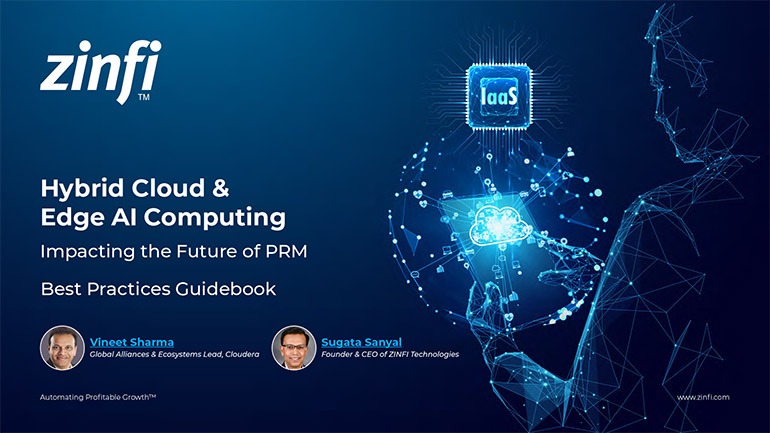 Hybrid Cloud and Edge AI Computing Impacting the Future of PRM
Hybrid Cloud and Edge AI Computing Impacting the Future of PRMDownload for FREE
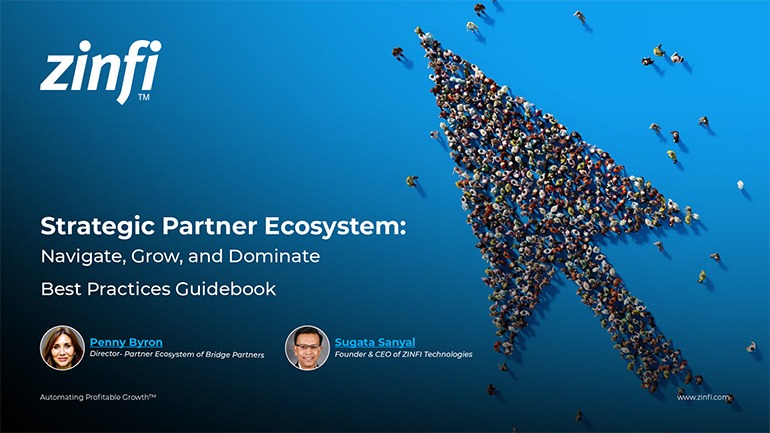 Strategic Partner Ecosystem: Navigate, Grow, and Dominate
Strategic Partner Ecosystem: Navigate, Grow, and DominateDownload for FREE
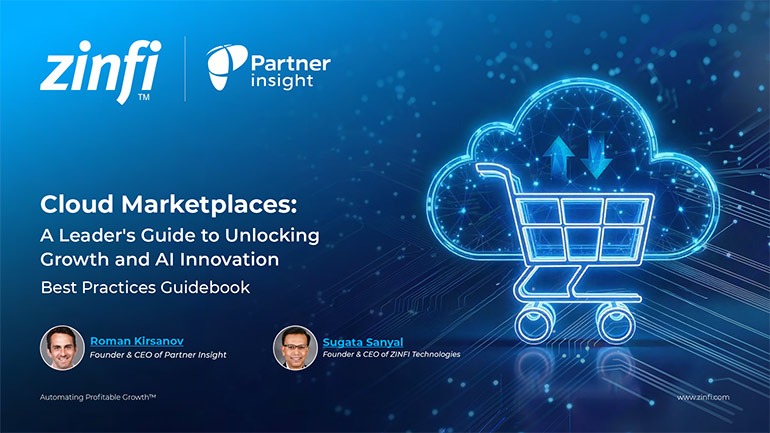 Cloud Marketplaces: Leader’s Guide to Unlocking Growth and AI Innovation
Cloud Marketplaces: Leader’s Guide to Unlocking Growth and AI InnovationDownload for FREE
 Getting More From Partner Performance: Guide to Measuring What Matters
Getting More From Partner Performance: Guide to Measuring What MattersDownload for FREE
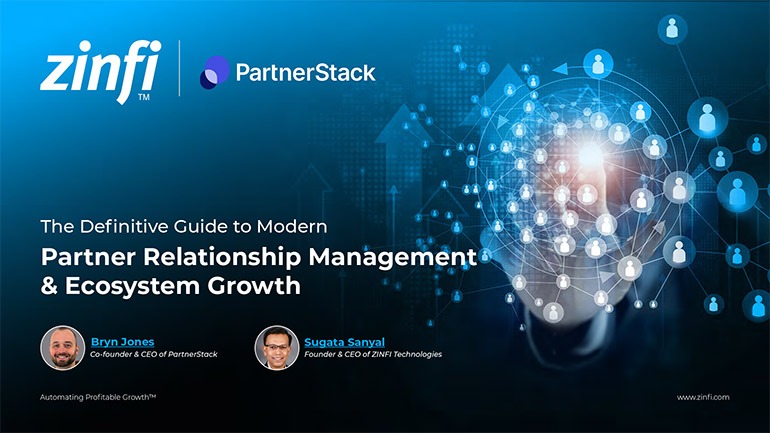 Guide to Modern Partner Relationship Management & Ecosystem Growth
Guide to Modern Partner Relationship Management & Ecosystem GrowthDownload for FREE
 Debunking the Entrepreneurship Myth Best Practices
Debunking the Entrepreneurship Myth Best PracticesDownload for FREE
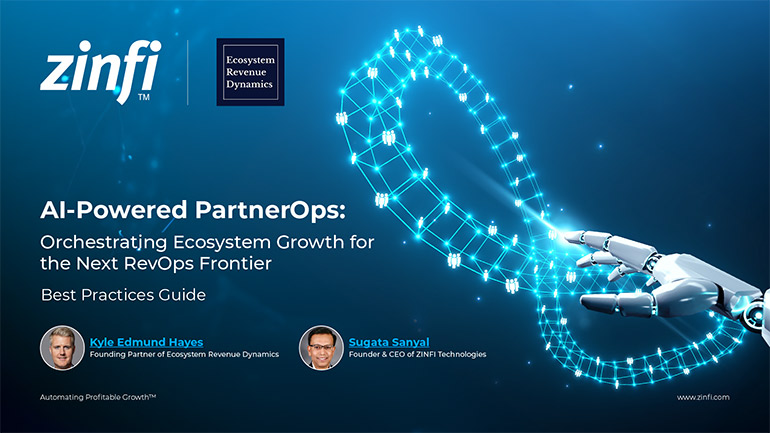 AI-Powered PartnerOps: The Next RevOps Frontier Best Practices
AI-Powered PartnerOps: The Next RevOps Frontier Best PracticesDownload for FREE







